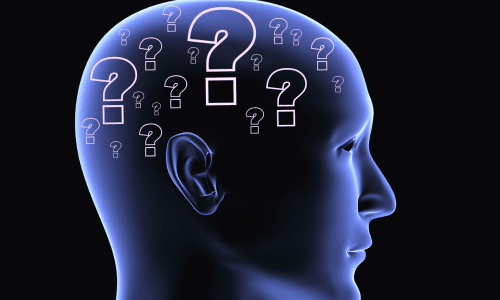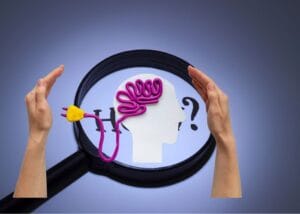Our minds work like a fast-moving train, constantly making decisions and judgments without us even realizing it. To do this quickly, our brains rely on shortcuts—simple ways of thinking that help us save time and energy. These shortcuts, known as mental biases, shape the way we see the world. Sometimes, they help us make good decisions. Other times, they can lead us to wrong conclusions. The human thought process is deeply influenced by these biases, shaping the way we interpret and react to the world around us. Understanding these mental shortcuts is an essential part of mastering the Architecture of Thought, helping us see things more clearly and make better choices.
Why Do We Use Mental Shortcuts in the Human Thought Process?
Our brains process massive amounts of information every second. If we had to analyze everything in detail, we’d never get anything done. Instead, our minds take shortcuts to simplify the process. These shortcuts help us make fast decisions, but they also shape the way we understand reality—sometimes in ways that aren’t accurate. This is why critical thinking and mindfulness are essential in ensuring we don’t fall into the trap of automatic decision-making based on flawed mental models. The Architecture of Thought consists of these automatic cognitive structures, which influence how we approach decision-making and problem-solving.
Common Mental Shortcuts That Shape Our Thinking

Confirmation Bias: Perceiving Reality Through Our Own Beliefs
In Confirmation Bias, we tend to look for information that supports what we already believe and ignore information that contradicts it. For example, if we think a certain diet is the best, we’ll focus on articles and studies that confirm our belief and ignore the ones that challenge it. This can make it hard to change our minds, even when faced with strong evidence. When people only seek out information that matches their beliefs, they create an echo chamber, reinforcing ideas that may not always be correct. Being aware of this bias allows us to challenge our assumptions and broaden our perspectives. Within the Architecture of Thought, confirmation bias is like a rigid structure that needs re-evaluation to allow intellectual growth.
Availability Bias: Trusting What’s Easy to Remember
We judge how common or important something is based on how easily we can recall it. If we hear about airplane crashes on the news, we might think flying is very dangerous, even though car accidents happen far more often. Our minds give more weight to recent and dramatic events, shaping our view of reality. The easier something is to remember, the more likely we are to believe it is frequent or important. This bias influences everything from personal fears to policy decisions, as sensational stories often outweigh statistical reality in our minds. The Architecture of Thought includes these memory-based cognitive shortcuts, often leading to skewed perceptions of reality.
Anchoring Effect: Sticking to the First Piece of Information

When we make decisions, the first piece of information we hear often influences us the most. If a store puts a high price on an item before offering a discount, we might think we’re getting a great deal—even if the final price is still high. Our brains hold onto the first number we see and use it as a reference point. This effect can be seen in negotiations, where the first price mentioned in a discussion often sets the tone for the entire process. Understanding the anchoring effect helps us become more objective in assessing information and making better decisions. This cognitive structure plays a significant role in the Architecture of Thought, as it defines the reference points we use in our decision-making.
Dunning-Kruger Effect: Overestimating Our Knowledge
Sometimes, people with little experience in a subject think they know more than they actually do. On the other hand, experts often realize how much they still don’t know. This explains why beginners may feel overconfident, while experienced people tend to be more cautious and humble. This effect appears in many areas of life, from workplace decisions to political opinions. Those who lack expertise may speak with great confidence, while those with deep knowledge hesitate, knowing the complexity of the subject. Recognizing this effect allows us to approach our own knowledge with humility and be more open to learning from those with greater experience. Within the Architecture of Thought, this bias represents an imbalance between perception and actual understanding.
How To Shape Our Everyday Lives

These biases influence the way we interact with others, make decisions, and understand the world. In relationships, we may assume a friend ignored our message on purpose when they were just busy. Our bias makes us take things personally, even when there’s another explanation. Misunderstandings often arise because we assume others think the same way we do, leading to unnecessary conflicts and strained relationships.
In shopping, sales and discounts play on our anchoring bias, making us think we’re saving money when the original price was set high on purpose. Marketers understand these biases and use them to influence our purchasing decisions. By being aware of these tactics, we can make more informed and deliberate buying choices.
In news and social media, we often follow pages that match our beliefs, strengthening confirmation bias and making us more certain we’re right—even if we’re not. Social media algorithms reinforce this by showing us content that aligns with our preferences, further narrowing our perspective. This effect makes it harder to engage in meaningful discussions and understand alternative viewpoints.
In work and business, people may overestimate their abilities due to the Dunning-Kruger Effect or make decisions based on a single dramatic event rather than overall trends due to the availability bias. Leaders who understand these biases can make better choices by relying on objective data rather than personal impressions or emotions. Improving decision-making strategies can enhance productivity, creativity, and workplace collaboration.
How to Recognize and Overcome These Biases
Since these biases happen automatically, we often don’t realize when they are influencing us. However, we can take simple steps to become more aware. Challenging our own beliefs is a crucial step. Instead of only reading things that confirm what we believe, we should seek out opposing views to get a fuller picture. By exposing ourselves to different perspectives, we develop a more balanced understanding of issues and reduce the influence of confirmation bias.
Taking a step back before making a decision helps us recognize whether we are being influenced by emotions or mental shortcuts. Slowing down our thought process allows us to evaluate information more objectively and avoid snap judgments. Looking at the bigger picture ensures that we don’t base our opinions on just one dramatic event. Considering long-term trends and broader facts helps us avoid being misled by isolated incidents or sensational stories. Asking for other perspectives is another effective strategy. Talking to people with different experiences can help balance our thinking and expose hidden biases. By engaging in meaningful discussions with diverse individuals, we gain new insights and challenge our own assumptions.
Our brains are wired to use shortcuts, which help us make quick decisions but also distort reality. By understanding these mental traps, we can learn to think more clearly, make better decisions, and improve our relationships. Awareness is the first step to overcoming these biases and seeing the world more accurately. The more we challenge our automatic thinking, the better we can shape our own reality instead of letting our mental shortcuts do it for us. Recognizing these biases allows us to become more conscious of how our thoughts shape our perceptions, ultimately leading to a more thoughtful and open-minded way of navigating the world.
By refining our Architecture of Thought and enhancing self-awareness, we create a clearer and more rational approach to decision-making and problem-solving.
Disclaimer:
This content is for informational purposes only and not a substitute for professional advice.

